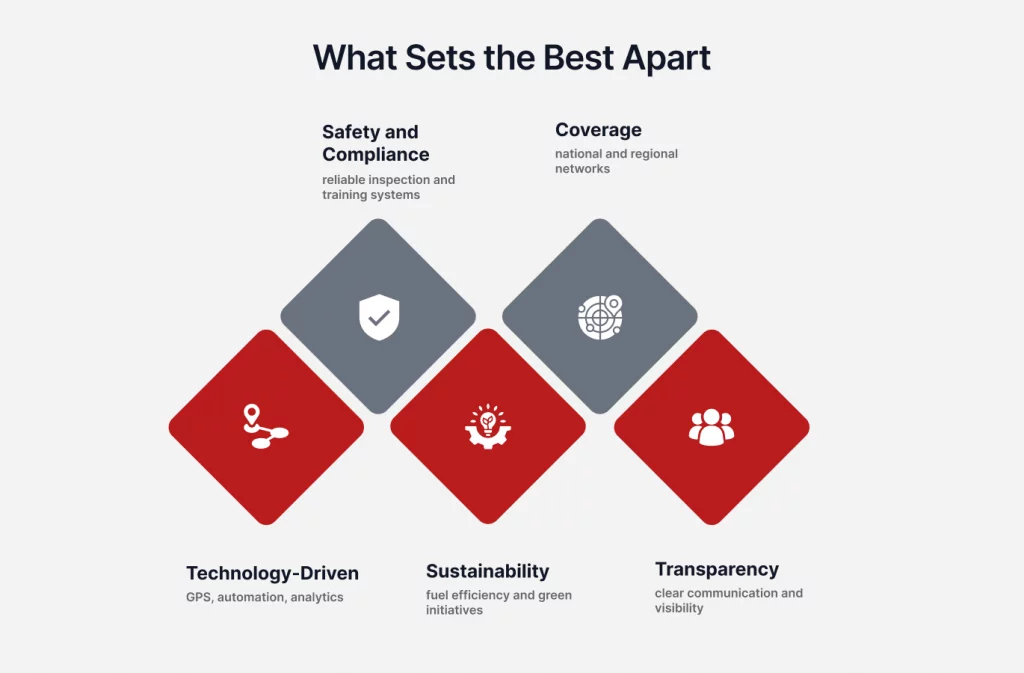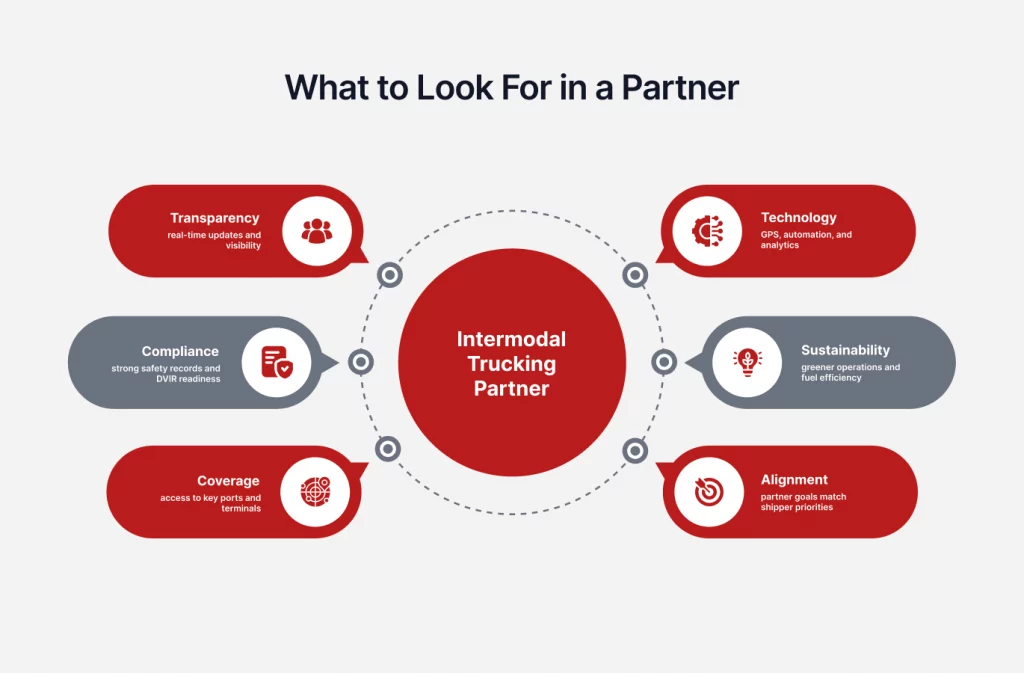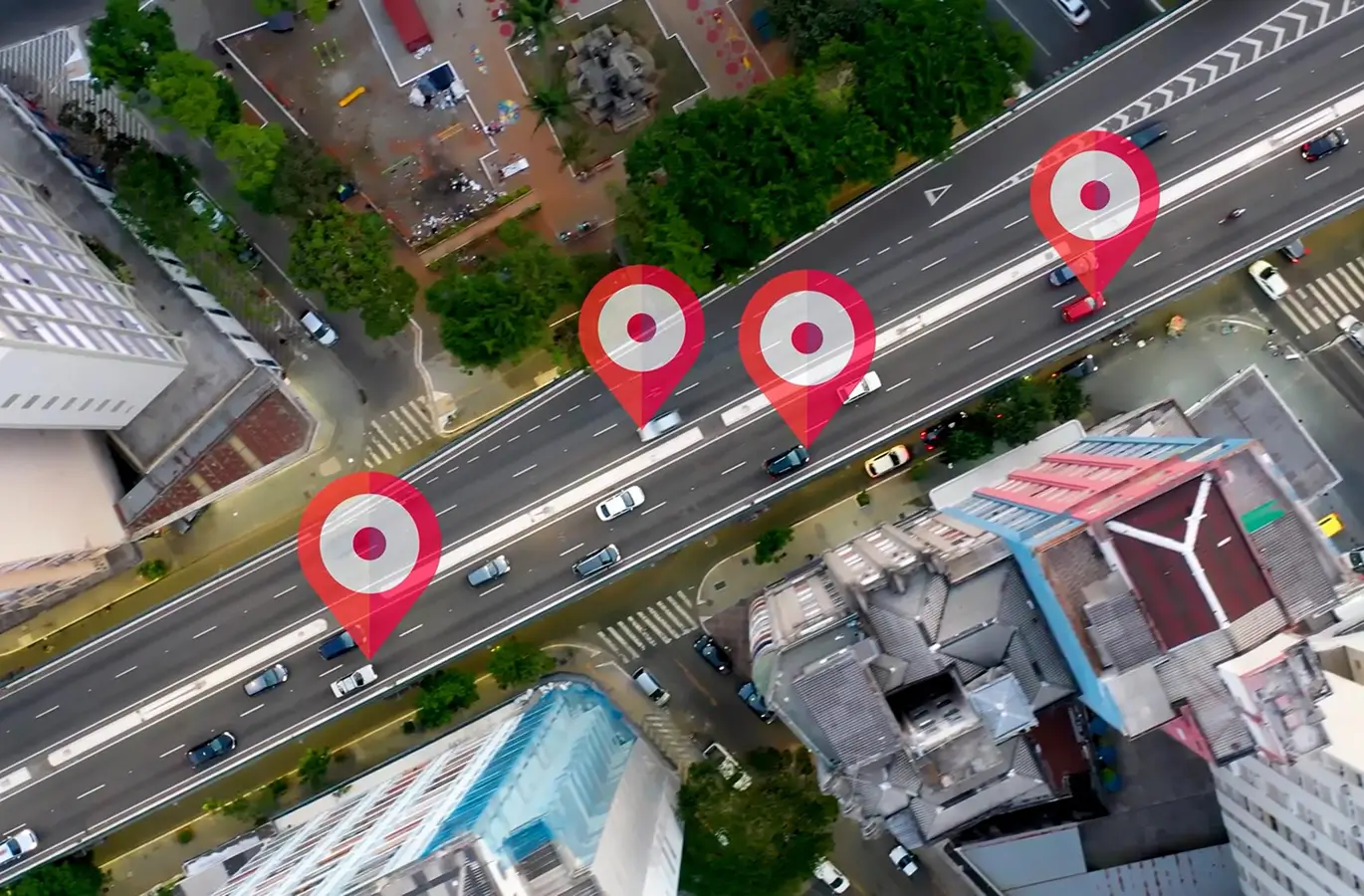Fleet operators dedicate significant resources to tracking vehicles, monitoring maintenance, and optimizing routes to ensure efficient operations. Yet in many businesses, the most valuable asset, customer data, remains scattered across invoices, spreadsheets, dispatch notes, and emails. Vehicles may be managed with precision, but without a clear system for customer information, business growth becomes difficult.
A Customer Data Management Platform (CDP) changes this. A CDP does more than hold names and phone numbers. It centralizes every interaction a customer has with your fleet: contracts, service requests, compliance history, and renewals. By organizing this data in one place, a CDP enables fleet companies to deliver proactive service, anticipate needs, and build stronger customer relationships.
In an industry where uptime is already challenging, managing customer expectations adds another layer of complexity. A CDP makes data usable and actionable, enabling fleets to transition from reactive problem-solving to a customer-first approach. This article explains what a CDP is, the struggles businesses face without one, and how adopting it can create long-term value.
What Is a Customer Data Management Platform?
A Customer Data Management Platform, or CDP, is a system that unifies customer information across multiple channels. In most industries, this means combining data from sales, marketing, and service. For fleet companies, the purpose is more specific. A CDP ties customer records directly to vehicle history, compliance logs, service schedules, and operational performance.
Customer information in a fleet business is often fragmented. For example:
- Billing systems store invoices and payment details.
- Dispatch software records job numbers and trip data, but rarely links to the full customer profile.
- Spreadsheets or email threads capture service notes that are easy to lose.
A CDP eliminates this fragmentation by creating a single, comprehensive profile for each customer. That profile contains every contract, every transaction, and every service interaction. It becomes the central source of truth for accounting, operations, and support teams.
Unlike a traditional CRM that mainly tracks contacts and sales opportunities, a CDP provides operational context. It shows not only who the customer is but also how they interact with your fleet daily. This integration of customer and vehicle data is what makes CDPs particularly valuable in the fleet industry.
Why Fleet Businesses Struggle Without a CDP
Many fleet companies already utilize multiple systems, including dispatch tools, invoicing software, compliance logs, and spreadsheets. While each system has value, none of them provides a complete picture of the customer. The result is siloed data, slow decisions, and missed opportunities.
1. Fragmented Customer Data
Customer details are spread across platforms that rarely communicate with each other. This creates duplicate records, inconsistent information, and wasted time searching for answers.
2. Manual Processes and Errors
Without centralized data, teams rely on manual entry to update records. This increases the risk of errors, from incorrect billing details to lost service history. Mistakes frustrate customers and damage trust.
3. Limited Visibility Into Customer Value
When customer history is scattered, managers cannot easily see which accounts generate the most revenue, which require the most service, or which are at risk of leaving. Decisions often end up being based on guesswork rather than facts.
4. Missed Retention and Growth Opportunities
Fleets without a CDP often fail to recognize when a customer is ready for renewal or could benefit from additional services. Competitors who have better data systems can step in and win those contracts.
These struggles add cost, reduce efficiency, and ultimately weaken customer relationships. A CDP addresses these problems by consolidating scattered data into a unified resource that is accessible across the organization.

How a CDP Transforms Fleet Operations
A Customer Data Management Platform is more than a database. For fleet businesses, it acts as the bridge between operational systems and customer-facing teams. By integrating data into a single platform, a CDP reshapes the way fleets serve clients, manage compliance, and plan for future growth.
1. Single Source of Truth
A CDP consolidates information from dispatch, billing, compliance, and service logs into one record for each customer. This eliminates confusion caused by multiple, inconsistent files and ensures that every department works from the same version of the truth. When operations, accounting, and support teams share access to unified profiles, decision-making becomes faster and more accurate.
2. Better Compliance Tracking
Compliance failures damage both finances and reputation. A CDP ties customer accounts to compliance records such as DVIR reports, safety checks, and contract terms. This means when a fleet prepares for an audit or renewal, all records are already linked to the right customer account. Managers no longer need to pull details from five different systems.
3. Personalized Customer Engagement
In fleet management, personalization does not mean marketing emails. It means knowing a customer’s service history, renewal dates, and preferences before they even ask. A CDP enables support teams to anticipate customer needs, schedule maintenance in line with customer priorities, and foster stronger long-term relationships.
4. Data-Driven Decision Making
A CDP helps identify high-value customers versus accounts that drain resources. With profitability metrics tied to customer profiles, managers can determine where to allocate their time, how to negotiate contracts, and which accounts require additional support. Instead of guesswork, leaders rely on clear, measurable insights.
5. Seamless Integration With Fleet Systems
Modern CDPs integrate with fleet management platforms, invoicing systems, and compliance software to streamline operations. This creates a connected workflow where vehicle data and customer data reinforce each other. For example, if a vehicle is flagged for repeated service, the linked customer account shows contract terms and service agreements in one place.
CDP Features vs Benefits for Fleet Businesses
| CDP Feature | Benefit for Fleets |
| Unified Customer Profiles | Eliminates duplicate records and confusion across departments. |
| Linked Compliance Records | Simplifies audits and ensures contracts stay compliant. |
| Service History Integration | Provides visibility into past repairs and future maintenance. |
| Profitability Insights | Highlights most valuable and at-risk customers. |
| Real-Time Data Sharing | Improves collaboration between operations, billing, and support. |
| System Integrations | Connects vehicle data with customer data for smarter planning. |
Real-World Use Cases for Fleet Companies
The impact of a Customer Data Management Platform is easiest to understand through examples. Fleet businesses of different sizes and types benefit in unique ways, but all gain from having customer and vehicle data connected in one place.
1. Logistics Provider Improving Renewals
A regional logistics company struggled with renewal rates because account managers lacked visibility into contract histories. With a CDP, every customer profile now includes contract dates, performance metrics, and service issues. Managers receive automated alerts before renewals, allowing them to address concerns proactively and secure longer-term agreements.
2. Service Fleet Reducing Downtime
A service fleet handling equipment maintenance had records spread across paper forms, email, and spreadsheets. By adopting a CDP, they linked customer profiles directly to service logs and vehicle histories. This allowed them to predict maintenance needs, notify customers before breakdowns, and cut downtime by nearly 20 percent.
3. Small Fleet Growing Repeat Contracts
A small trucking company relied on word-of-mouth and basic invoicing tools. By introducing a CDP, they gained insight into which customers were most profitable and which were high-risk. With that knowledge, they focused on their best accounts, upsold additional services, and grew repeat contracts without needing to expand their fleet size.
These examples highlight the versatility of CDPs. Whether the goal is retaining clients, reducing service delays, or growing revenue, the platform adapts to the scale and needs of each fleet.

Common Misconceptions About CDPs in the Fleet Industry
Despite their benefits, Customer Data Management Platforms are still misunderstood in the fleet world. Many operators believe these tools are designed only for large corporations or marketing departments. In reality, a CDP is a practical solution that improves day-to-day fleet operations.
1. “A CDP is just for marketing.”
In many industries, CDPs are closely tied to customer segmentation and advertising campaigns. For fleets, the value lies in operational efficiency. A CDP tracks service histories, compliance records, and contract renewals. It is less about digital ads and more about building reliable customer relationships.
2. “My CRM already does this.”
CRMs manage contacts and sales pipelines but rarely connect with vehicle data or compliance logs. A CDP offers deeper integration, revealing not only who your customers are but also how they interact with your fleet daily. It complements a CRM rather than replacing it.
3. “Too complex for smaller fleets.”
Some small operators assume CDPs are enterprise-only systems. In fact, CDPs scale to fit the size of the business. A small trucking company can use a CDP to track customer profitability. In contrast, a national carrier may use it for advanced compliance reporting. Both gain clarity and efficiency.
By moving past these misconceptions, fleet operators of all sizes can recognize CDPs as tools that strengthen operations, improve customer service, and support growth.
Steps to Choose the Right CDP
Selecting a Customer Data Management Platform is not about buying the most advanced system available. It is about finding the solution that aligns with your fleet’s unique challenges and goals. A clear process helps avoid costly missteps and ensures the platform delivers value from day one.
1. Define Your Data Challenges
Start by mapping where customer data currently resides. Identify gaps such as duplicate records, lack of compliance tracking, or limited renewal visibility. This exercise clarifies what problems the CDP must solve.
2. Prioritize Integration with Fleet Systems
A CDP should connect smoothly with the tools you already use: dispatch platforms, invoicing systems, and compliance software. Strong integration ensures data flows freely across the business instead of creating another silo.
3. Focus on Compliance and Service Features
For fleet operators, compliance and service history are non-negotiable. Choose a CDP that links customer records to DVIR logs, service requests, and contract obligations. This makes audits easier and builds customer trust.
4. Check Scalability and Ease of Use
The right CDP should be powerful enough for long-term growth but simple enough that teams can adopt it quickly. Ask providers about onboarding, training, and support resources before making a decision.
5. Evaluate Total Cost and Transparency
Hidden fees undermine trust. Look for clear pricing models and ensure the solution is affordable relative to the value it provides.
By following these steps, fleet businesses can select a CDP that fits their operations today while providing room to grow tomorrow.
Building Long-Term Value With CDPs
Adopting a Customer Data Management Platform is not just a short-term efficiency upgrade. It is a long-term investment in how your fleet builds relationships and delivers value. When customer and vehicle data are kept in sync, teams gain the clarity to act with foresight rather than reacting to problems after they occur.
Strengthening Customer Trust
Customers stay loyal to providers who understand their needs and anticipate issues. A CDP enables you to reach out before a contract expires, schedule maintenance before a vehicle breaks down, and provide accurate billing without errors. These small touches accumulate into trust that competitors cannot easily replicate.
Driving Continuous Improvement
A CDP creates a feedback loop by collecting performance data at the customer level. Managers can see which accounts are most profitable, which require additional service, and where processes can be streamlined. This transforms customer data into a source of operational learning that evolves in tandem with the business.
Enabling Scalable Growth
Whether you manage ten vehicles or hundreds, growth becomes more manageable with a CDP in place. The system scales as your customer base expands, keeping data organized and accessible even as complexity rises.
Over time, the platform becomes more than a database. It becomes a partner in delivering reliability, transparency, and customer-first service, the qualities that sustain a competitive fleet business.
Final Thoughts
Fleet companies often invest heavily in tracking vehicles, monitoring compliance, and optimizing routes to increase efficiency. Yet the foundation of long-term success lies in managing customer data with the same precision. A Customer Data Management Platform provides that missing piece.
By consolidating records across billing, dispatch, compliance, and service, a CDP gives fleets a single source of truth. It transforms scattered information into actionable insights, making it easier to build trust, reduce errors, and strengthen relationships. Whether the goal is to retain clients, improve service efficiency, or identify profitable accounts, a CDP offers the tools to deliver measurable improvements.
For fleet businesses, the benefits extend beyond data storage. A CDP becomes the backbone of customer-first operations, ensuring that uptime is matched by reliable service.
With the right platform in place, supported by tools like REACH’s fleet management solutions, operators can align compliance, service, and customer engagement within a single system. The result is a business prepared to scale confidently while keeping customer relationships at the center.
Key Takeaways
- A Customer Data Management Platform (CDP) consolidates fragmented customer information into a single, unified source of truth.
- Fleets without a CDP face challenges such as duplicate records, manual errors, poor visibility, and missed renewal opportunities.
- A CDP transforms operations through compliance tracking, personalized service, profitability insights, and integration with existing fleet systems.
- Real-world examples demonstrate that CDPs help logistics providers improve renewals, reduce service fleet downtime, and enable small operators to grow repeat contracts.
- Common misconceptions, such as CDPs being “only for marketing” or “too complex for small fleets,” limit adoption; however, the reality is that they scale to any business size.
- By selecting the right CDP and fostering long-term trust, fleets can achieve greater efficiency, compliance, and enhanced customer loyalty.
Frequently Asked Questions (FAQs)
-
What is a Customer Data Management Platform in the context of fleet businesses?
A Customer Data Management Platform (CDP) is a system that centralizes all customer-related information, including contracts, service records, compliance data, and billing history. For fleets, it connects customer accounts with vehicle and operational data, providing a comprehensive view for informed decision-making.
-
How is a CDP different from a CRM?
A CRM focuses mainly on managing contacts and sales opportunities. A CDP takes it a step further by integrating operational data, such as service logs, compliance records, and customer profitability. For fleets, this means the CDP not only tracks who the customer is but also how they interact with your vehicles and services.
-
Why do fleet businesses struggle without a CDP?
Without a CDP, customer data remains scattered across systems. This creates duplication, manual errors, poor visibility into customer value, and missed opportunities for retention or upselling. These gaps make it harder to scale and maintain strong customer relationships.
-
Is a CDP suitable for small fleets?
Yes. CDPs are scalable and adapt to the size of the business. A small fleet can use one to track profitable accounts and reduce downtime. In contrast, larger fleets benefit from advanced compliance and integration features.
-
How does a CDP improve customer relationships?
By consolidating records, a CDP allows fleets to anticipate customer needs, send timely renewal alerts, ensure accurate billing, and provide proactive service. This fosters trust, enhances retention, and generates opportunities for sustained growth.



